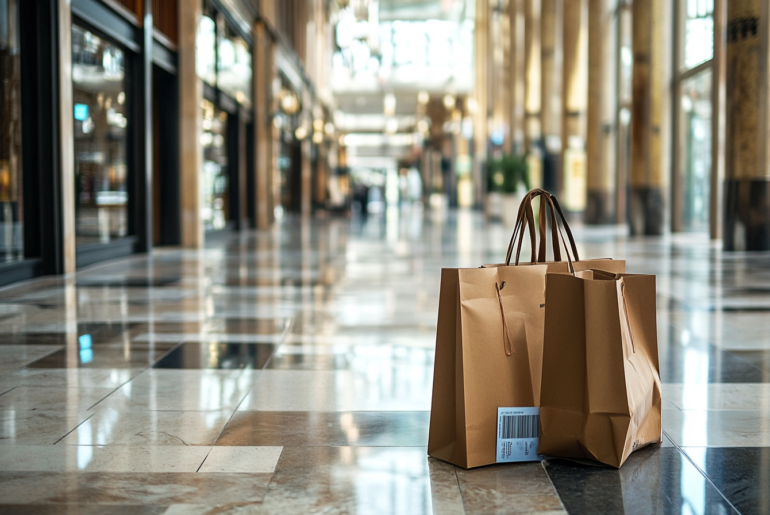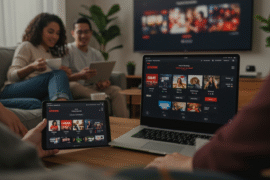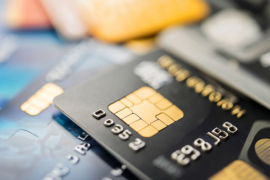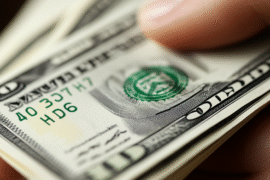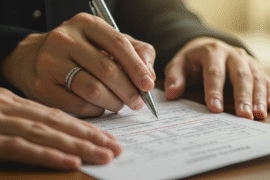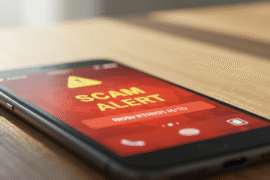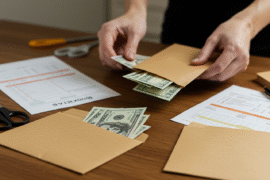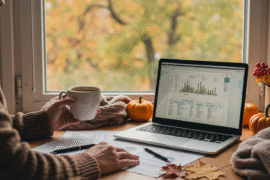This article may contain references to products or services from one or more of our advertisers or partners. We may receive compensation when you click on links to those products or services. Nonetheless, our opinions are our own.
The information presented in this article is accurate to the best of our knowledge at the time of publication. However, information is subject to change, and no guarantees are made about the continued accuracy or completeness of this content after its publication date.
- Introduction
- Understanding the Signs of Shopping Addiction in Your Life
- What Causes Shopping Addiction?
- Practical Strategies to Overcome Shopping Addiction and Regain Control
- Building Healthier Shopping Habits to Support Your Financial Goals
- Seeking Help: Resources and Support for Your Journey to Recovery
- Frequently Asked Questions
- Recommended Reads
Introduction
You may be reading this because you notice a pattern in your shopping habits. Sometimes, buying something new feels better than dealing with daily life. Shopping can be fun and feel good. It gives you joy and control, helping to lower your stress. However, if you feel a strong need to shop and feel guilty, in debt, or sad afterward, it might mean you have a bigger problem, which is shopping addiction. This article explores the signs that show you or someone you know could be struggling with compulsive shopping. It also discusses why this behavior happens and shares helpful tips to manage this addiction. Knowing this can help you take control of your spending and build a healthier relationship with shopping.
Understanding the Signs of Shopping Addiction in Your Life
Realizing you might have a shopping addiction can be challenging. It’s essential to look for signs that your shopping might be a problem. You might feel happy or excited when you think about shopping, but those good feelings can quickly change to guilt or anxiety later. If you often spend more money than you can afford, leading to debt or affecting your financial responsibilities, then it’s time to examine your shopping habits closely.
Also, consider if shopping is affecting other areas of your life. Are you choosing to shop instead of spending time with your family or doing activities you enjoyed before? If the answer is yes, look out for these signs:
- Secretive Behavior: Hiding your purchases or not discussing your spending habits.
- Emotional Shopping: Buying things to feel better when stressed, sad, or bored.
- Compulsive Buying: Regularly purchasing items you do not need or seldom use.
- Financial Stress: Worrying about bills or increasing debt due to shopping.
Knowing these signs can help you feel more in control of how you spend your money. Writing about your shopping experiences or talking to a financial advisor can provide good insights into your behavior and help you create a plan for better financial well-being.
Unpacking the Emotional Triggers Behind Compulsive Spending
Compulsive spending is how some people deal with stress, anxiety, or depression. When you feel this way, you might want to shop for comfort. This can give you temporary happiness, but it often doesn’t last long. After a tough day at work, you may need to shop and forget your budget or savings goals. Understanding these emotions can help you manage them better.
Common emotional triggers include:
- Loneliness: Shopping can create a short-lived feeling of connection and joy.
- Low self-esteem: Purchasing new things can briefly lift your confidence but may mask deeper fears.
- Excitement: The thrill of getting new items can lead to excessive purchases.
Practicing mindfulness, speaking openly with trusted friends, or seeking professional help can help you understand your feelings. Identifying emotional triggers allows you to break the cycle of compulsive spending and build better money habits.
What Causes Shopping Addiction?
Shopping addiction, also called compulsive buying disorder, has mental, emotional, and social causes. People may develop this addiction to handle stress, anxiety, depression, loneliness, or low self-esteem. They often shop to feel better, even for a little while. Society also plays a role. Materialism, advertisements, and peer pressure can increase compulsive spending. Plus, easy online shopping and credit options can reinforce this behavior.
The Impact of Shopping Addiction on Your Finances and Mental Health
Your shopping habits can affect both your financial situation and mental health. A shopping addiction can lead to debt, making it challenging to cover everyday expenses like bills and food. The guilt or anxiety that follows overspending creates a cycle—buying brings short-term happiness but later leads to regret and financial stress.
Here are some common effects:
- Increased stress and worry about money
- Feelings of shame or embarrassment about spending habits
- Avoiding friends and family due to financial worries
- Difficulty concentrating on tasks due to financial stress
To address these challenges, create a budget to track spending, seek advice from experts, and recognize the emotional triggers that lead to shopping addiction. Understanding the problem is the first step to improving shopping habits and achieving financial peace of mind.
Types of Shopping Addictions
Shopping addiction can take different forms:
- Emotional Spending: Buying to cope with stress, anxiety, or loneliness.
- Bargain Hunting: Purchasing unnecessary items just because they are on sale.
- Status Shopping: Buying expensive brands to boost self-esteem or impress others.
- Materialism: Believing that acquiring more possessions leads to happiness.
- Online Shopping Addiction: Frequent impulsive purchases through online platforms.
Identifying your shopping addiction type can help tailor recovery strategies.
Consequences of Shopping Addiction
Compulsive shopping can lead to:
- Financial debt and strain
- Relationship conflicts
- Feelings of guilt and anxiety
- Declining mental health
- Social withdrawal
Seeking professional help and support from loved ones is essential in overcoming shopping addiction.
Voted "Best Overall Budgeting App" by Forbes and WSJ
Monarch Money helps you budget, track spending, set goals, and plan your financial future—all in one app.
Get 50% OFF your first year with code MONARCHVIP
Practical Strategies to Overcome Shopping Addiction and Regain Control
Overcoming shopping addiction requires self-awareness and a solid plan. Here are the steps to take:
- Identify Triggers: Keep a journal to recognize the emotions or situations that lead to impulsive shopping.
- Delay Purchases: Wait 24 hours before buying non-essential items to avoid impulse purchases.
- Create a Budget: Focus on necessities and savings to gain financial control.
- Seek Support: Talk to trusted friends or a financial counselor for guidance.
- Find Alternatives: Replace shopping with healthier activities like exercising, reading, or hobbies.
Regaining control over spending takes time, but small, consistent changes can lead to long-term financial stability.
How to Stop Shopping Addiction?
Stopping shopping addiction requires commitment and action. Follow these steps:
- Recognize the problem and identify shopping triggers.
- Find healthy coping strategies like exercising or practicing mindfulness.
- Set clear spending limits and delay unnecessary purchases.
- Create a budget focused on needs rather than wants.
- Seek support from friends, family, or financial professionals.
Overcoming shopping addiction is a journey, and persistence is key to success.
Building Healthier Shopping Habits to Support Your Financial Goals
Developing mindful shopping habits can help you regain control over your finances. Here are some tips:
- Set Clear Goals: Define financial priorities, such as saving for a vacation, a new car, or an emergency fund.
- Create a Budget: Allocate necessities, savings, and discretionary spending funds.
- Practice Mindful Spending: Before purchasing, ask if it aligns with your financial goals. Wait 24 hours before making a decision.
Tracking spending habits can also be helpful. Below is an example:
| Date | Item Purchased | Category | Price |
|---|---|---|---|
| 10/01 | Coffee | Food & Drink | $4 |
| 10/05 | New Shoes | Clothing | $60 |
| 10/10 | Subscription Service | Entertainment | $15 |
Awareness of spending habits can help break the cycle of shopping addiction and improve financial well-being.
Seeking Help: Resources and Support for Your Journey to Recovery
Recovering from shopping addiction doesn’t have to be done alone. Several resources can help:
- Support Groups: Shopaholics Anonymous and online communities provide peer support.
- Therapy: Professional counseling helps address emotional triggers and develop coping strategies.
- Apps: Budgeting tools like Mint, YNAB, and PocketGuard assist in tracking expenses.
- Books: “The Psychology of Money” and “Shopaholic to the Rescue” offer insights into financial behaviors and emotional spending.
Frequently Asked Questions
What is shopping addiction?
Shopping addiction, also known as compulsive shopping or oniomania, is a behavioral disorder where individuals feel a strong, uncontrollable urge to shop, often resulting in financial and emotional distress.
What are the common symptoms of shopping addiction?
Symptoms include excessive shopping, hiding purchases, spending beyond means, feeling guilty after shopping, and experiencing financial difficulties due to overspending.
When should someone seek professional help?
If shopping habits negatively impact daily life, relationships, or finances, professional help should be sought. Feelings of guilt, anxiety, or an inability to control spending are key signs that intervention is needed.

Reviewed and edited by Albert Fang.
See a typo or want to suggest an edit/revision to the content? Use the contact us form to provide feedback.
At FangWallet, we value editorial integrity and open collaboration in curating quality content for readers to enjoy. Much appreciated for the assist.
Did you like our article and find it insightful? We encourage sharing the article link with family and friends to benefit as well - better yet, sharing on social media. Thank you for the support! 🍉
Article Title: Shopping Addiction: The Hidden Cost of Retail Therapy
https://fangwallet.com/2025/03/19/shopping-addiction/The FangWallet Promise
FangWallet is an editorially independent resource - founded on breaking down challenging financial concepts for anyone to understand since 2014. While we adhere to editorial integrity, note that this post may contain references to products from our partners.
The FangWallet promise is always to have your best interest in mind and be transparent and honest about the financial picture.
Become an Insider

Subscribe to get a free daily budget planner printable to help get your money on track!
Make passive money the right way. No spam.
Editorial Disclaimer: The editorial content on this page is not provided by any of the companies mentioned. The opinions expressed here are the author's alone.
The content of this website is for informational purposes only and does not represent investment advice, or an offer or solicitation to buy or sell any security, investment, or product. Investors are encouraged to do their own due diligence, and, if necessary, consult professional advising before making any investment decisions. Investing involves a high degree of risk, and financial losses may occur including the potential loss of principal.
Source Citation References:
+ Inspo
There are no additional citations or references to note for this article at this time.
